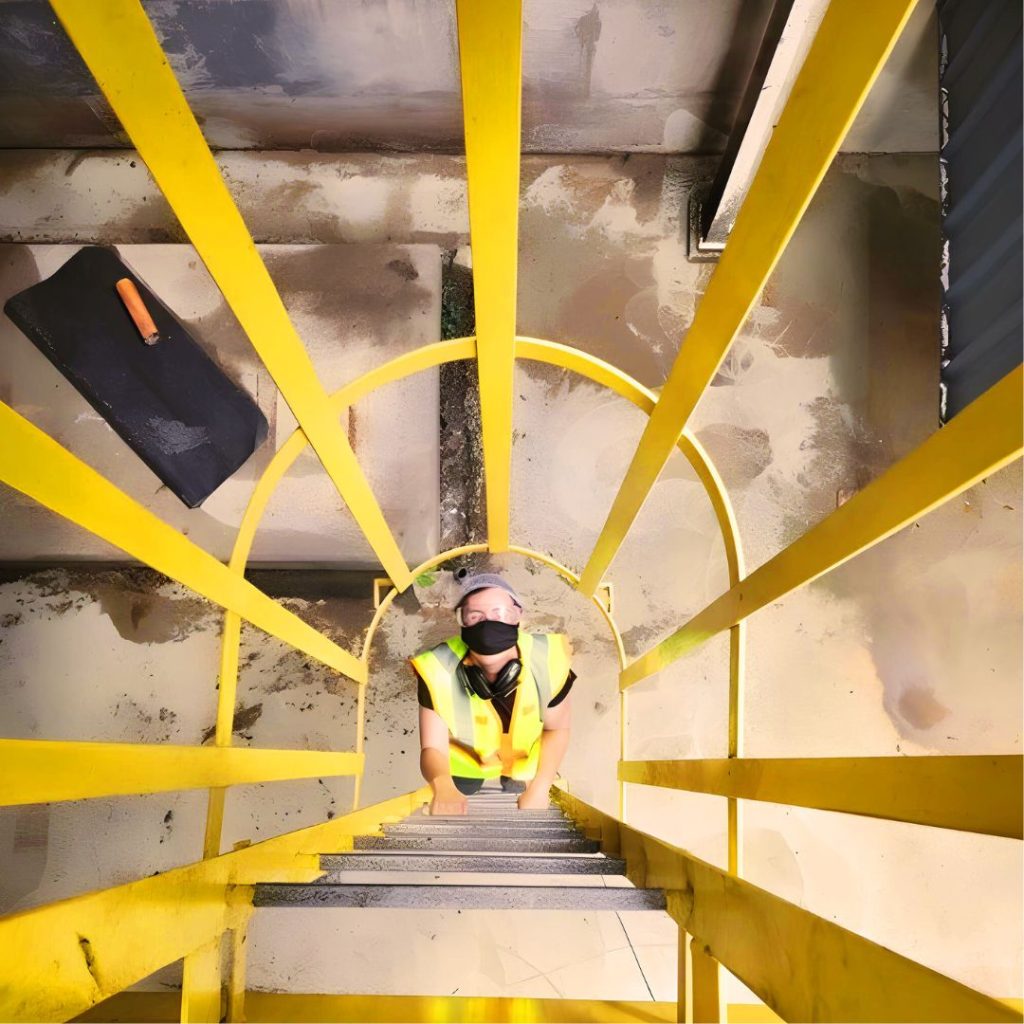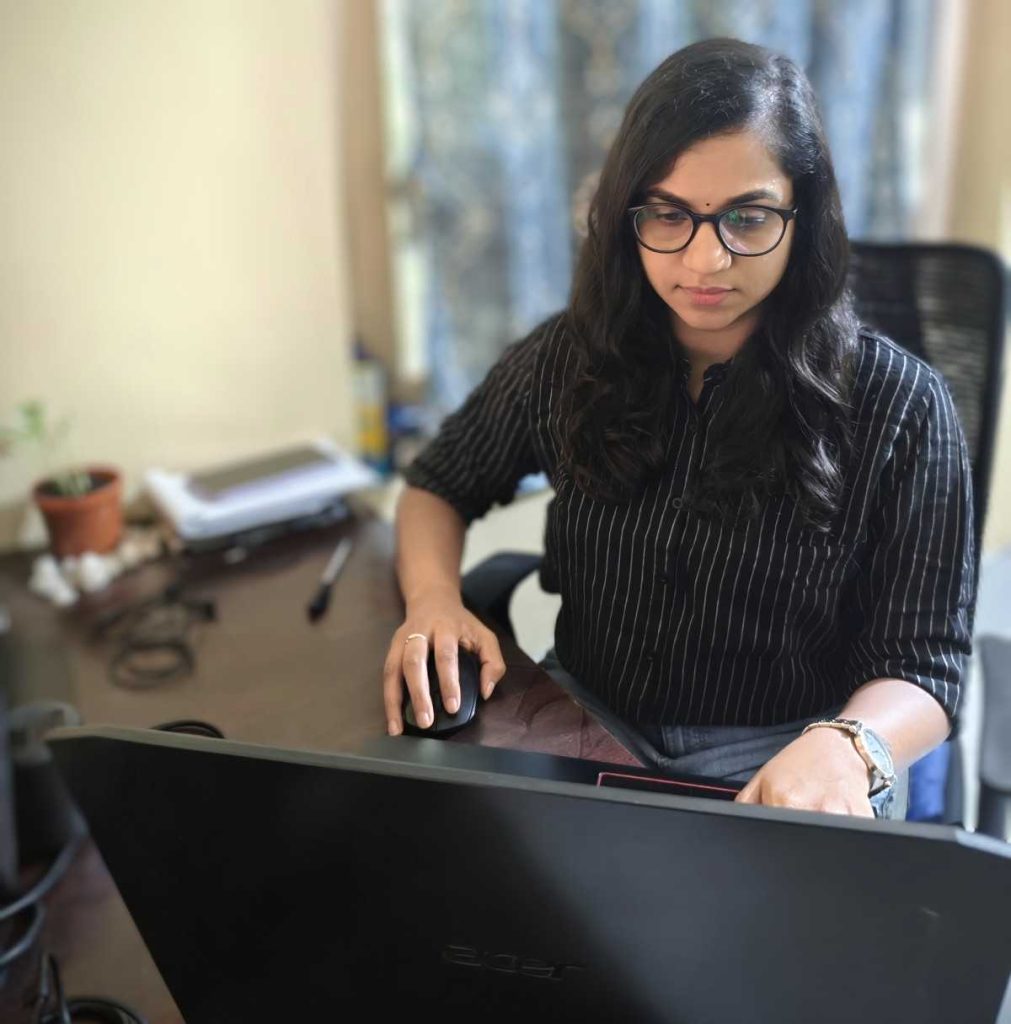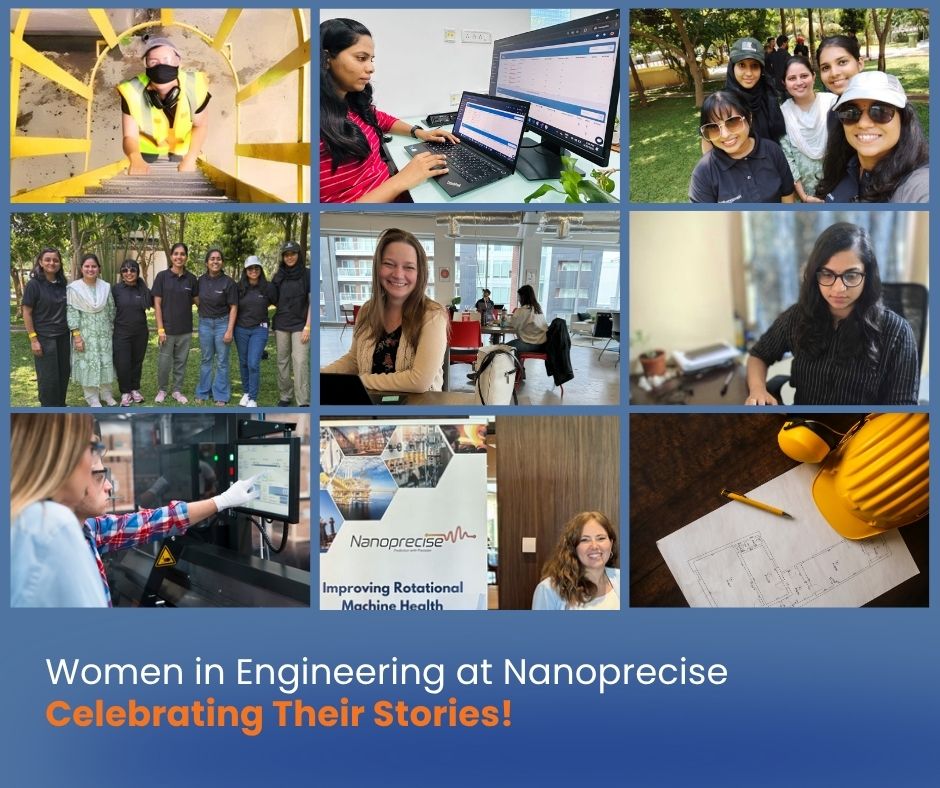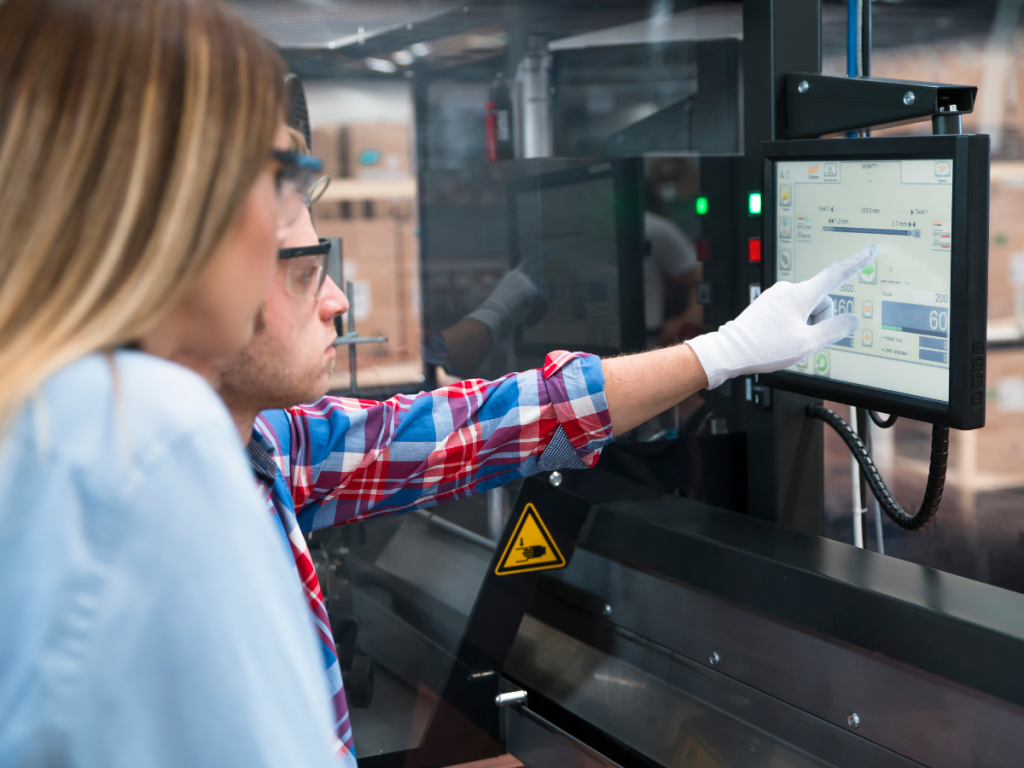Something powerful is happening in manufacturing. It’s not just the machines getting smarter. It’s not just the dashboards lighting up with real-time data.
It’s something deeper.
It’s about the people driving this change.
Behind every intelligent system, every predictive algorithm, and every connected machine — there are brilliant minds shaping the future.
And across the globe, more and more of those minds belong to women. Not necessarily working on the factory floor — but designing and enabling the very technologies that power it.
These are the women of manufacturing tech: engineers, designers, analysts, strategists, and customer leads—building the digital foundation for tomorrow’s industrial world.
The Factory of the Future Is Being Coded Today
At Nanoprecise, we’re lucky to witness this transformation up close. Every day, we work with women who bring clarity to complexity, human perspective to algorithms, and deep care to digital reliability.
Rachel Green – The Bridge Between Tech and People
Rachel, our VP of Customer Experience is one of the pillars of this transformation at Nanoprecise. She’s not here just to push software—she’s here to make sure it works in the real Industrial world.
Her team doesn’t show up after deployment—they show up before, during, and long after, staying embedded in the customer’s journey. Rachel walks the plant floor not as a visitor, but as a collaborator—listening to operators, asking smart questions, and digging into the why behind every problem.
“The smartest tech in the world doesn’t matter if customers can’t rely on it. Behind every predictive algorithm, there’s a tech success team with the deepest knowledge of the technology—and the ability and determination to solve real problems. That’s how tech turns into trust.” – Rachel Green

Under her leadership, the Customer Experience and Condition Monitoring functions at Nanoprecise has gone far beyond support—it’s become a strategic engine that drives adoption, impact, and long-term outcomes for manufacturers using Nanoprecise Solutions around the world.
Urmila Satpute – Building for the Moment of Truth
Where Rachel focuses on the journey, Urmila zeroes in on the user’s moment of truth. As a front-end UI developer, she ensures that the most critical insights are not just visible—they’re actionable.
From the way alerts appear to how dashboards guide decisions, her work ensures that critical information is easy to navigate and understand. If a motor is overheating, it’s the design choices made by her team—including her contribution—that help ensure warnings are visible exactly where users can find them easily. And when a machine shows signs of failure, the intuitive layouts she helps build enable quick responses.
“When something works the way, you expect it to, without making you think—that’s when I know I’ve done my job, ” she says. Especially in manufacturing, where people are under pressure and time is everything.”

Urmila’s work turns complex AI-driven insights into fast, intuitive user experiences—so teams on the ground can act without hesitation.
Aishwarya Hemadri – Helping Products Stay Reliable
Then there’s Aishwarya, our Senior QA specialist. Her role is all about making sure our products work the way they’re supposed to — every update, every feature, every fix. With automation at the core of her work, she helps reduce manual testing efforts and ensures that product changes meet customer expectations before they go live. It’s not just about catching bugs — it’s about building confidence in every release.
Aishwarya works closely with developers and product teams to validate real-world scenarios quickly and efficiently. Her focus on proactive testing helps us deliver a better experience for our customers — one that’s stable, reliable, and trusted.
“We’re not testing for perfection,” she says. “We’re testing to make sure it works in the real world, for real customers, in real industrial environments. “

Thanks to her diligence, Nanoprecise’s solutions have today helped factories across the world avoid unplanned shutdowns, save thousands in energy, and improve equipment reliability.
Together, Rachel, Urmila, and Aishwarya and many others like them at Nanoprecise are representing something much bigger than individual roles. They represent a shift, one where women are rebuilding the manufacturing ecosystem through technology.
No Divide: Women Are Powering Modern Manufacturing
Let’s not separate the tech from the shop floor—because today, they go hand in hand. Whether it’s through smart tools or hands-on expertise, women in manufacturing are driving change from every angle.
Whether on-site or online, anyone building and supporting systems that keep industrial operations running is shaping the future of manufacturing. And women are doing exactly that—across roles, industries, and countries. From streamlining processes to developing AI-powered insights, they’re making an impact at every step.
A report by Deloitte and The Manufacturing Institute shows that women make up just under 30% of the U.S. manufacturing workforce, but that number is on the rise. And as more digital roles open up, so do new opportunities for women to lead, innovate, and reimagine the world of manufacturing.
70% of women in manufacturing tech roles plan to stay in the sector long-term.
48% of women leaders say mentorship played a critical role in their growth.
60%+ of manufacturers now have formal diversity hiring targets, up from 45% in 2020. (WiM 2024)
What’s driving this slow but steady progress is a growing wave of digital transformation—from AI, automation, and IIoT to cybersecurity. These emerging roles provide greater flexibility, better work-life balance, and a clearer path to leadership—all of which are attracting more women to the manufacturing sector.
Two key communities are helping drive this momentum
Women in Manufacturing® (WiM) is a national association in the U.S. dedicated to supporting, promoting, and inspiring women in all areas of manufacturing—from the factory floor to the boardroom. Through training programs, networking events, and leadership development, WiM is building a future where more women can thrive, lead, and shape the industry.
Women in IoT is a global movement that connects women working at the intersection of technology and industry. The group organizes monthly meetups to foster community, share knowledge, and support personal and entrepreneurial growth. Whether you’re building connected devices or enabling data-driven decision-making, Women in IoT provides a space to collaborate, learn, and lead.
With communities like these paving the way, and more women entering tech-forward roles, the face of modern manufacturing is evolving—and it’s more diverse, dynamic, and inclusive than ever before.
Global Voices Leading this Change
Around the world, women are stepping up—not just as contributors, but as leaders. Just take a look:
- Barbara Humpton, CEO of Siemens USA, is a powerhouse voice in the intersection of IoT, AI, and smart manufacturing. In a 2024 interview, she spoke about how cloud and data-driven solutions are accelerating industrial transformation.
- Mary Barra, the CEO of General Motors, is not only redefining automotive manufacturing—she’s proving that women can lead legacy industries into the future.
- Peggy Gulick, Director of Digital Transformation at AGCO, is on the front lines of bringing smart systems into traditional factories.
- Allison Grealis, President of Women in Manufacturing, is empowering thousands of women through mentorship, networking, and advocacy.
- Revathi Advaithi, CEO of Flex, is driving digital transformation, sustainability, and connected manufacturing at a global scale. As co-chair of the World Economic Forum’s Advanced Manufacturing CEO Community – she is also a strong advocate for diversity and inclusion in STEM.
These women are proving, again and again, that the future of manufacturing is diverse, inclusive, and driven by collaboration.
The Path Forward
Of course, we still have a long way to go. Gender bias, limited access to leadership, and underrepresentation persist—not just in tech, but across manufacturing as a whole.
But here’s the difference now: women aren’t just knocking on the door. They’re building new ones.
“Innovation happens when new voices are heard,” Rachel says. “And today, more women are not just being heard—they’re leading. They’re reshaping what’s possible.”
Whether it’s simplifying a dashboard, navigating a field deployment, testing edge cases, or managing global rollouts—women are not just participating in manufacturing. They’re actively transforming it.

In Closing
This isn’t a feel-good story. This is a fact: the factories of the future will run on systems built by women. Not just because it’s right. But because it works. And as more women step into roles across manufacturing tech, bringing with them curiosity, empathy, and relentless innovation, they’re not just changing code or metrics.
They’re changing the very heart of how industries operate.
And they’re only just getting started…
